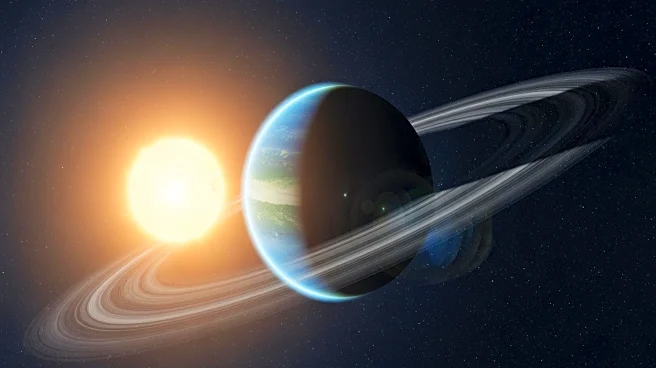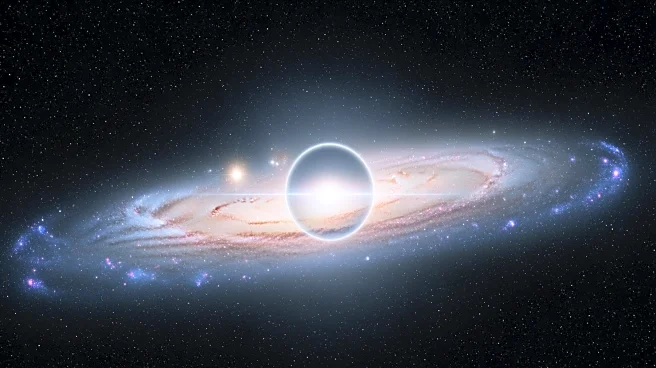What's Happening?
Astronomers have discovered a new exoplanet, GJ 251c, located just 18 light-years away from Earth. This super-Earth, with a mass approximately 3.84 times that of Earth, resides in the habitable zone of its star, GJ 251, a red dwarf. The habitable zone is the region
around a star where conditions might be right for liquid water to exist, making it a prime candidate for the search for extraterrestrial life. The discovery was made by a team led by Corey Beard from UC Irvine, who used high-resolution observations to detect the planet's gravitational influence on its star.
Why It's Important?
The discovery of GJ 251c is significant as it adds to the catalog of potentially habitable exoplanets that are relatively close to Earth. Its proximity allows for more detailed study, which could provide insights into the conditions necessary for life beyond our solar system. The exoplanet's location in the habitable zone makes it a valuable target for future research, particularly in the search for atmospheres that could support life. This finding also demonstrates the effectiveness of current astronomical techniques and the potential for future technologies to further explore such distant worlds.
What's Next?
Future observations and technological advancements will be crucial in studying GJ 251c more closely. Researchers aim to directly image the exoplanet to determine its atmospheric composition and potential for supporting life. The development of next-generation telescopes will play a key role in these efforts, enabling scientists to gather more detailed data. Continued investment in exoplanet research will be essential to unlocking the mysteries of GJ 251c and other similar worlds, potentially leading to groundbreaking discoveries about life beyond Earth.













